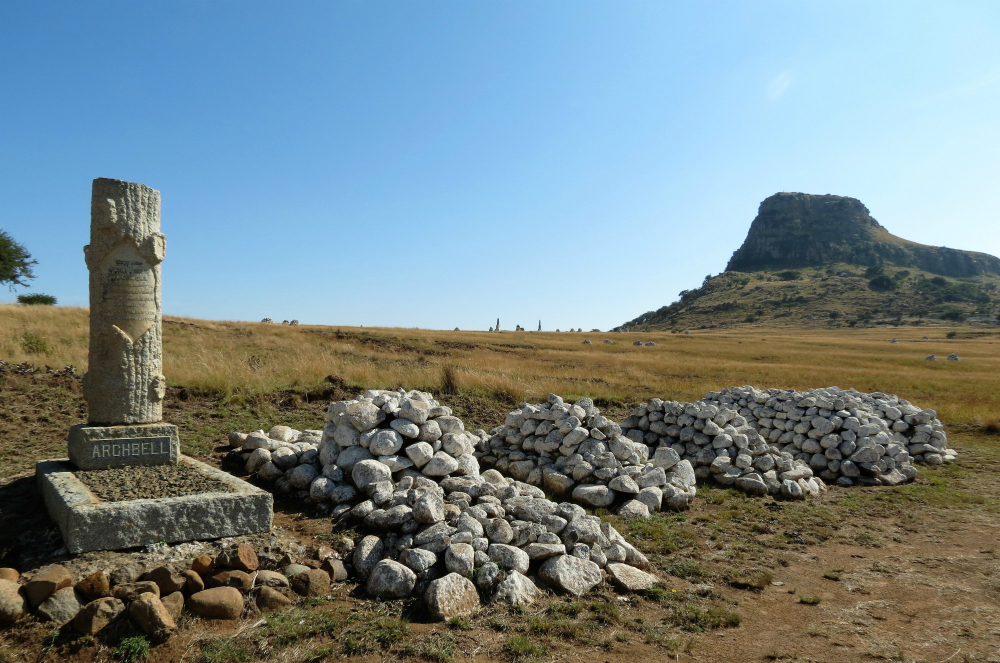For any history buff a visit to the KwaZulu-Natal Battlefields region is a must. And to experience history brought to life, a guided walk on the battlefields of Isandlwana and Rorke’s Drift is essential.
It was a chilly evening as the day gave way to night. The blanket helped, as did a glass of sherry… but the enormity of that fateful day in 1879 sent shivers down my spine. Especially as we were standing atop the iNyoni hill, the very spot where tens of thousands of Zulu warriors had lain low waiting for the following day. In valley below, on the eastern slope of the Isandlwana hill, was the British camp – completely unaware of the bloodshed that dawn would bring.
Historian and epic storyteller Lindizwe Ngobese (aka Dalton) brought to life, not only the experiences of that day, but filled the gaps with insight into what led to the battle in the first place. Being a Zulu himself, and the great-grandson Inkosi Sihayo (a significant player in these parts during the Anglo-Zulu War of 1879), he was able to infuse the Zulu perspective into his narrative. But having said that, when he was relating the British side of the story, he was profoundly British.
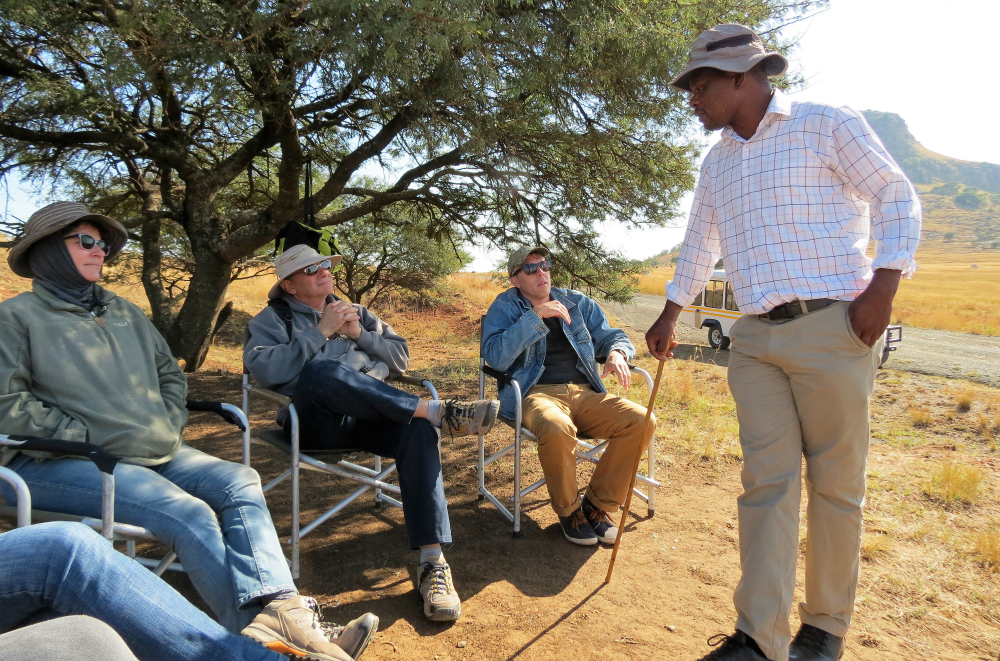
The shivers of the night before were nothing compared to the emotions that I felt walking on the Isandlwana Battlefield. I see a pile of white stones. Dalton tells us that this pile is not just the memorial to one death, but many – an unmarked grave. I look up and see many more such piles. The extent of this horror, and the futility of war a reality. There are memorials, the names representing the nameless. There is a hush about us. I consider the loss, not just to British and Zulu life, but to humanity as a whole. Why is war such an integral part of the human psyche?
And we weren’t done yet.
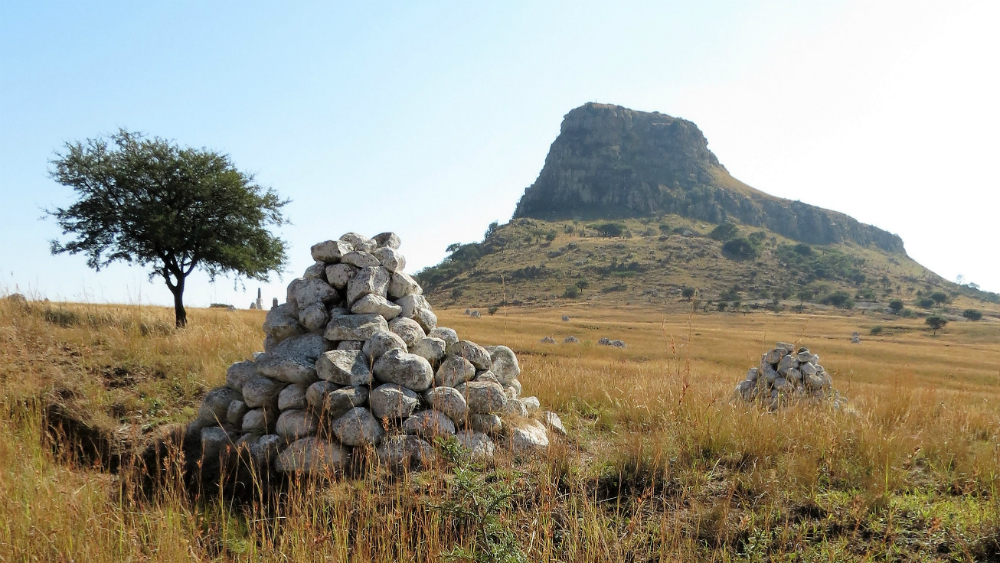
The Battle of Isandlwana was the first major confrontation between Brit and Zulu. It began on the 22 January 1879, at around midday. On a day when the moon eclipsed the sun, the ‘day of the dead moon’. The British soldiers were no doubt weary, and hot – their red uniforms designed for the cooler climes of the Northern Hemisphere. This was to be the Zulu Nation’s greatest victory. Of the 1,412 British soldiers, only 55 survived. The Zulu army are thought to have suffered the loss of around 1,000 men.
In the late afternoon of that very same day, the second battle of that historic day commenced. Fresh from their victory, a group of around 4,000 Zulu soldiers advanced on the mission station and trading post at Rorke’s Drift.

Alerted by two surviving soldiers from Isandlwana, the small garrison of about 150 soldiers set about fortifying their position. The defence began at about 4:30 pm, where wave after wave of Zulu warriors stormed the garrison. The British amazingly survived the onslaught, losing only 16 men. After the battle 351 Zulu bodies were counted.
At both Isandlwana and Rorke’s Drift one gets to remember the lost from both sides. Sadly, the memorials to the Zulu’s who lost their lives is a fairly recent addition.
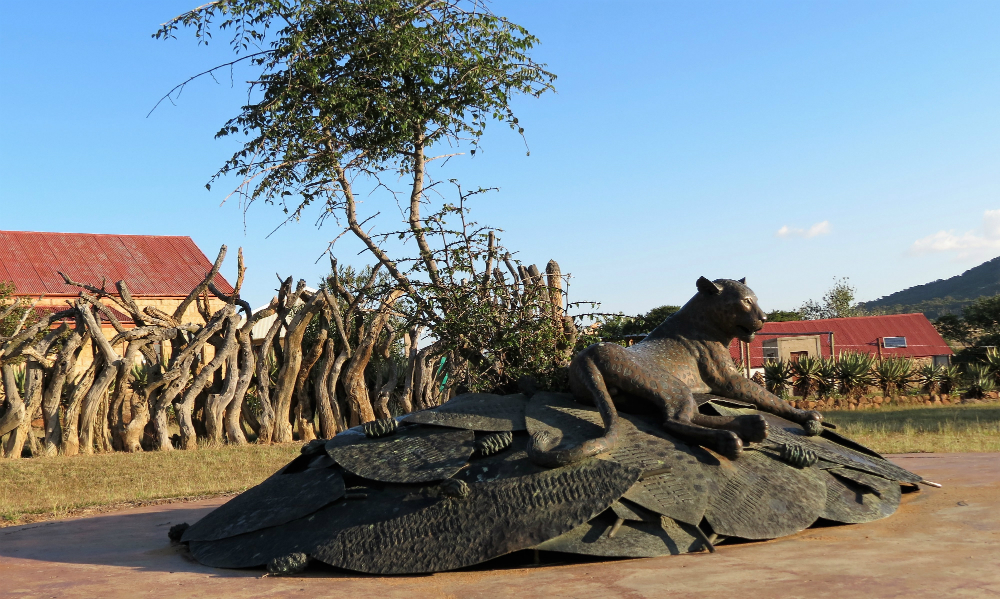
We surveyed the memorial to the fallen Zulu warriors at Isandlwana Hill. Dalton explains that the impressive brass structure is that of a traditional Zulu warrior’s necklace, and that the tree planted alongside is that of the Buffalo Thorn – a tree with historic and cultural significance. A branch of the tree, with the Zulu name umLahlabantu meaning “that which buries the Chief”, is used to retrieve the spirit of a deceased person from where he died.
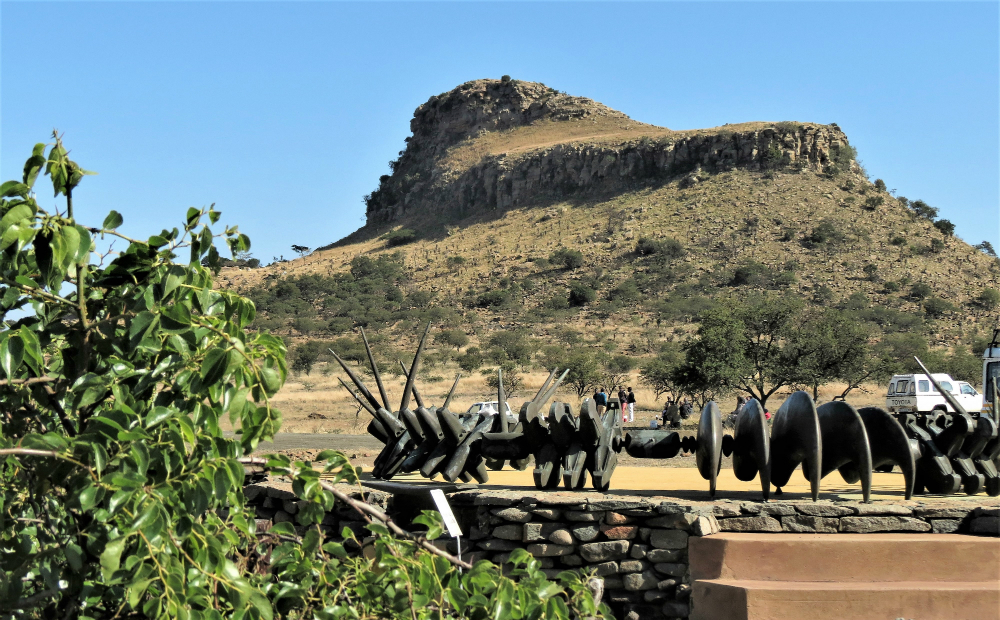
In the distance under the shadow of the Isandlwana hill is a group of Zulu men paying tribute to family members that were lost in the battle – a fitting way to end our day on the Battlefields.
Words & Images – Tessa Buhrmann

